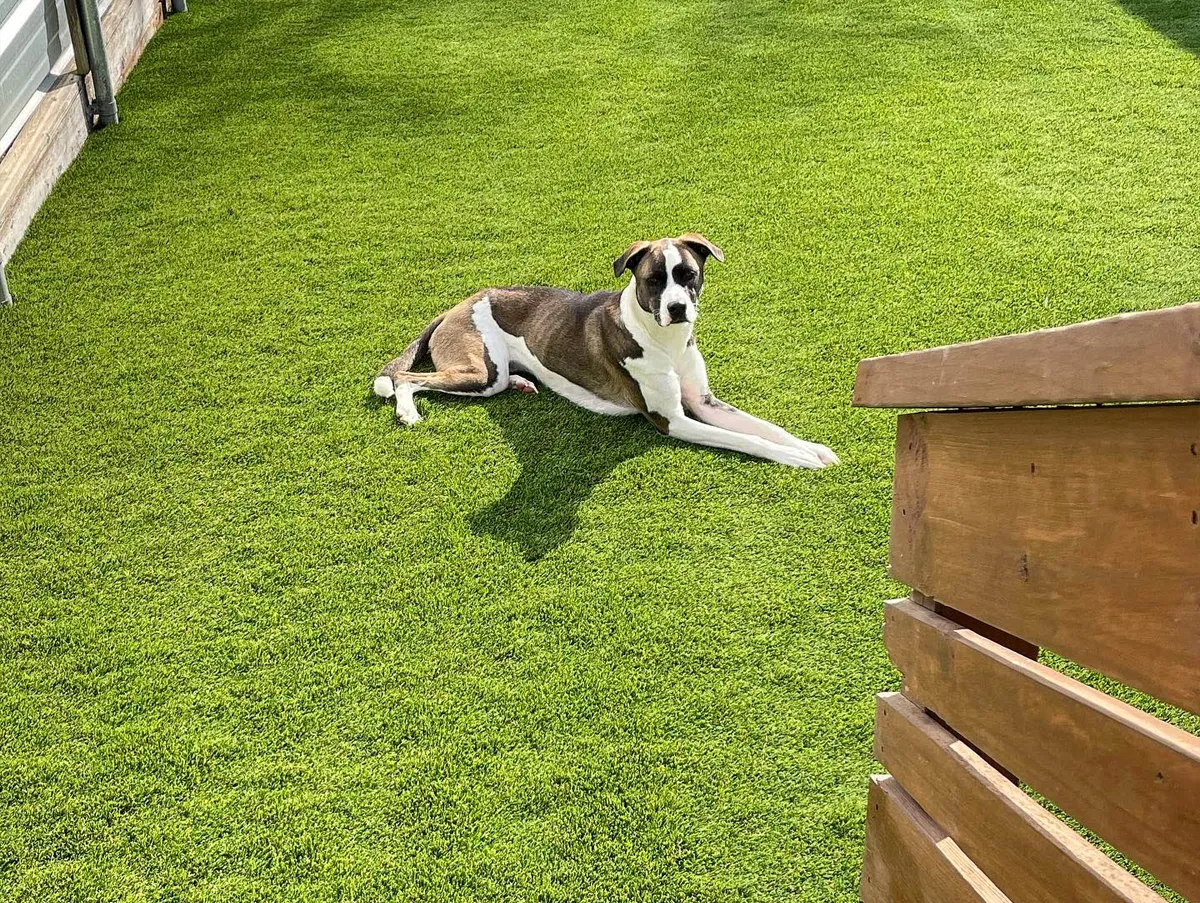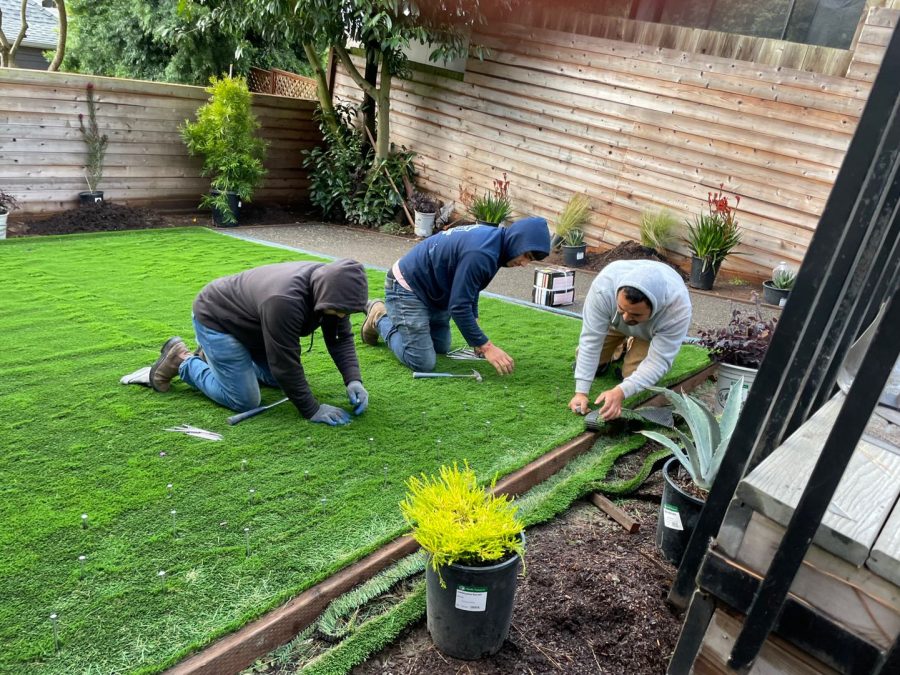Explore the Environmental Perks of Opting for Artificial Turf Solutions
The adoption of synthetic grass solutions presents an engaging opportunity to resolve pushing ecological difficulties. By substantially decreasing water use and minimizing the application of unsafe chemicals, these options not just promote lasting landscape design yet also protect neighborhood communities. The reduced carbon impact linked with lowered maintenance activities adds to a much more sustainable technique to land administration. However, the effects of these advantages prolong past plain preservation initiatives, increasing questions regarding their long-term influence on habitat preservation and overall environmental equilibrium. Checking out these dimensions reveals an intricate interplay worth considering.
Water Conservation Conveniences
One of the most substantial benefits of artificial turf is its capability to conserve water. In contrast, synthetic grass does not require watering, significantly decreasing the general demand for water resources.
By removing the requirement for regular watering, fabricated grass adds to sustainable landscape methods and helps minimize the environmental impact of excessive water usage. The conservation of water prolongs to the reduction of runoff, which can lead to dirt erosion and waterway pollution.
In addition, the installation of man-made grass enables towns and home owners to allot water sources more effectively, concentrating on crucial usages such as drinking water and agriculture. The shift towards synthetic grass not just promotes liable water usage however additionally straightens with more comprehensive environmental goals targeted at maintaining natural resources.
As areas significantly prioritize sustainability, the water conservation advantages of man-made grass offer an engaging situation for its adoption in commercial and residential landscape design jobs.
Decreased Chemical Use
The shift to fabricated lawn significantly lowers the dependence on chemical treatments typically utilized in all-natural lawn upkeep. Typical lawn management usually involves the application of pesticides, herbicides, and plant foods to promote growth and control insects. These chemicals can position dangers to human health and wellness, neighborhood wildlife, and the atmosphere, adding to dirt and water contamination.
In contrast, synthetic turf gets rid of the demand for these dangerous compounds. By minimizing the launch of synthetic compounds right into the ecological community, synthetic lawn promotes much healthier dirt and water systems.
In addition, the lack of chemical drainage linked with synthetic grass installments aids safeguard local waterways from air pollution, sustaining aquatic life and keeping biodiversity. Turf installation phoenix az. As areas increasingly prioritize lasting methods, selecting synthetic grass presents a practical remedy that aligns with environmental conservation objectives. Through this change, homeowner can enjoy lush green spaces without endangering ecological health, leading the way for a much more lasting future
Lower Carbon Footprint

Additionally, the installation of synthetic grass can cause significant water preservation. All-natural lawns require substantial amounts of water for irrigation, which not just contributes to the carbon footprint related to water extraction and therapy however likewise strains regional water sources. In comparison, fabricated grass requires minimal maintenance, calling for no watering, consequently substantially minimizing water usage and its connected energy expenses.
Furthermore, the long life of synthetic grass adds to its reduced carbon effect. With a lifespan visit the website of up to 15 years or more, the requirement for frequent substitutes is decreased, causing much less waste and reduced energy consumption in manufacturing and disposing of conventional lawn options. Generally, man-made grass provides a sustainable option for environmentally conscious landscaping.
Habitat Preservation
Habitat conservation is an essential factor to consider in the discussion over landscape design options, particularly when comparing synthetic grass to natural turf. Natural yard yards commonly need substantial maintenance, consisting of making use of plant foods, herbicides, and chemicals, which can adversely influence neighborhood ecological communities. These chemicals can seep into the dirt and rivers, hurting native vegetation and fauna and interfering with regional environments.
Artificial grass removes the requirement for dangerous chemicals, therefore protecting nearby wildlife and maintaining the honesty of bordering ecosystems. The installation of artificial turf can lead to the conversion of former yard locations right into even more biodiverse landscapes, such as pollinator yards or native plant areas, which can support local wildlife.
Ultimately, the transition to synthetic grass not just conserves water and minimizes maintenance initiatives yet likewise cultivates a much more unified connection between human tasks and the native environment, advertising environment preservation while doing so.
Long-Term Sustainability
Long-lasting sustainability is an essential consider assessing the advantages of synthetic grass over typical yard yards. Among one of the most substantial advantages of synthetic grass is its longevity; it can last as much as 15-20 years with minimal upkeep, whereas all-natural grass calls for constant reseeding and substitute. This long life decreases the need for consistent resources, such as water, plant foods, and chemicals, which are vital for maintaining a healthy turf lawn.
Furthermore, synthetic grass adds to a decrease in carbon emissions related to yard treatment equipment. Typical lawns frequently need gas-powered lawn mowers, leaners, and blowers, every one of which add to air pollution. Turf installation phoenix az. On the other hand, synthetic grass eliminates the requirement for such tools, promoting a cleaner atmosphere
In addition, the manufacturing of synthetic grass increasingly uses recycled products, boosting its sustainability profile. As producers take on environment-friendly techniques, home the environmental footprint of artificial turf continues to lessen.

Final Thought
The fostering of synthetic grass services offers considerable ecological benefits, consisting of substantial water conservation, decreased dependence on harmful chemicals, and a lower carbon footprint. Moreover, synthetic grass help in maintaining all-natural habitats by reducing land read disruption and promoting long-lasting sustainability through making use of resilient materials. Jointly, these variables underscore the potential of man-made grass to contribute positively to environmental health and wellness and provide a feasible option to standard landscaping methods in a progressively resource-conscious globe.
In contrast, synthetic turf does not need watering, significantly minimizing the general demand for water sources. By minimizing the release of artificial substances right into the ecological community, artificial turf promotes healthier soil and water systems.
Furthermore, the installation of fabricated grass can result in substantial water preservation. In contrast, man-made turf needs very little maintenance, calling for no watering, thus considerably lowering water usage and its connected power costs.

Comments on “Personalized Turf Installation Phoenix AZ for Homes, Businesses, and Recreational Spaces”